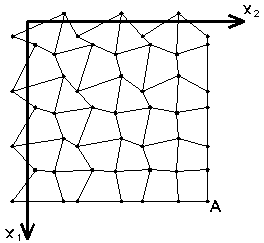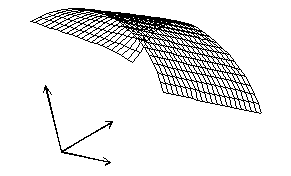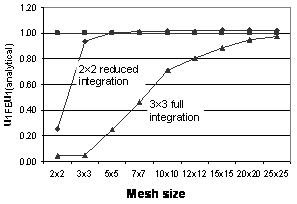Finite Element Analysis of Plates and Shells
by Dimitris Pagkarliotas
Diploma Thesis, July 2002
ABSTRACT
The work investigates the linear elastic analysis of plate and shell structures, using a specific nine-node degenerated finite element, initially proposed by Ahmad, Irons and Zienkiewicz (1970). The convergence of finite element solution to the analytical solution is examined for several benchmark problems. Special emphasis is given on the effects of reduced integration and the possible appearance of the so-called "spurious" or "zero-energy" modes. In addition, a special subroutine is developed to account for the effects of pressure loading, taking into account the "deformation dependence" of this distributed loading, sometime called "follower force".


Figure 1: Spurious modes appear in the analysis of plates when under-integrated elements are used, without appropriate boundary conditions.


Figure 2: A benchmark problem: the pinched cylinder. Deformed shape for one-eighth of the cylinder is shown in the top right, whereas the convergence of the numerical solution for fully-integrated and reduced-integrated elements is shown at the bottom right.